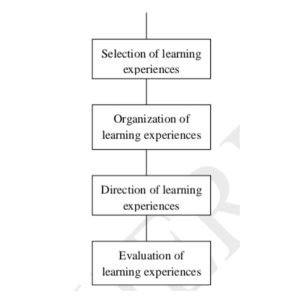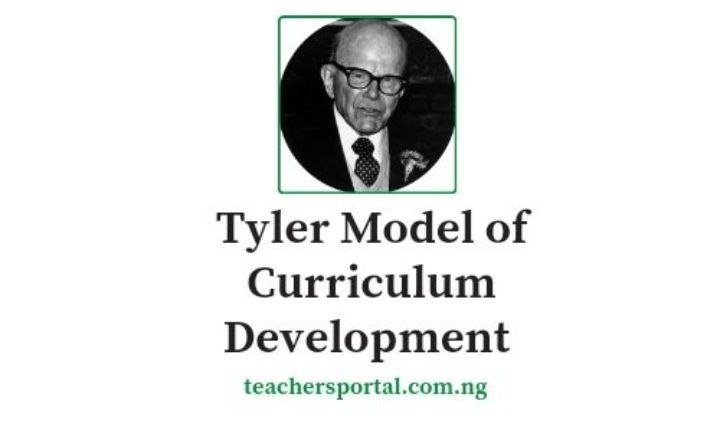The Tyler Model of Curriculum Development, created by Ralph Tyler in the 1940s, stands as a foundational framework for curriculum design and is widely utilized by educators in America and beyond. Originally outlined in his book “Basic Principles of Curriculum and Instruction,” Tyler aimed to provide principles for curriculum creation rather than a rigid, lockstep model.
Tyler’s model, often dubbed the ‘Linear Objectives’ model, advocates for a sequential and systematic curriculum design. It emphasizes deriving educational goals from subject analysis and content, offering a scientific-rational approach to planning. While revolutionary in providing purpose to educational practice, Tyler’s approach has faced criticism for neglecting contextual influences, personal needs, and the prior learning of students.
Despite its limitations, the Tyler Model has significantly influenced curriculum development and instructional design. Its success has shaped contemporary education, prompting ongoing discussions and evaluations. However, critics argue that the model falls short in capturing the dynamic nature of how teachers engage with their classes, overlooking the deliberation and negotiation inherent in curriculum planning and implementation.
Ralph Tyler’s curriculum design, as outlined in his model, revolves around four fundamental components. Firstly, it prompts educators to identify the educational purposes a school should aim for, emphasizing the importance of defining clear educational objectives. Secondly, the model suggests selecting learning experiences that align with these educational objectives, thereby ensuring a purposeful curriculum.
The third aspect involves organizing the learning experiences in a strategic manner to achieve the desired outcomes. This organizational step underscores the need for a systematic approach to curriculum implementation. Lastly, the model addresses the crucial aspect of assessment and evaluation techniques. It encourages educators to employ effective methods for assessing and evaluating the success of the implemented curriculum, emphasizing the importance of feedback and continuous improvement.
In essence, Tyler’s curriculum design provides a structured formula for educators, focusing on setting educational objectives, selecting relevant learning experiences, organizing them purposefully, and implementing robust assessment and evaluation strategies to gauge the curriculum’s effectiveness.
Ralph Tyler’s curriculum model is characterized by its linear progression, commencing with the establishment of educational objectives and culminating in the evaluation phase. Notably, the evaluation within this model is viewed as a terminal process. The significance of the objectives in this model is multifaceted. Firstly, objectives serve as the foundation for the selection and organization of learning experiences. This ensures that every chosen learning activity is purposefully aligned with the overarching educational goals.
Moreover, objectives play a pivotal role in assessing the curriculum. They become the benchmark against which the success of the curriculum is measured. Tyler emphasizes that objectives should be derived from multiple sources, including the learners themselves, the realities of contemporary life, and insights from subject specialists. This holistic approach ensures that educational goals are relevant, responsive to the learners’ needs, and reflective of the broader societal context.
In Tyler’s perspective, evaluation is conceptualized as a process of comparing the initial expectations set by the educational objectives with the actual outcomes achieved. This iterative assessment allows for a systematic review of the curriculum’s effectiveness and facilitates adjustments to enhance future iterations. The linear nature of the model, coupled with the terminal evaluation, provides a structured framework that has been influential in shaping curriculum development practices. However, critics argue that this linear approach may oversimplify the complex, dynamic nature of teaching and learning interactions in the classroom.

In Figure 1 of Tyler’s model, three additional steps in curriculum planning are outlined: selection, organization, and evaluation of learning experiences. Tyler conceptualizes learning experiences as the dynamic interaction between the learner and external environmental conditions that elicit reactions. Emphasizing the importance of these experiences, Tyler outlines specific objectives that teachers should aim to achieve through them.
Firstly, learning experiences are seen as instrumental in the development of thinking skills. Tyler advocates for activities that stimulate critical and analytical thinking, fostering cognitive growth in learners. Secondly, these experiences are considered valuable for acquiring information. The curriculum should be designed to provide opportunities for learners to gain knowledge and understanding in a meaningful and engaging manner.
Furthermore, Tyler highlights the role of learning experiences in shaping social attitudes. By incorporating activities that promote collaboration, empathy, and effective communication, teachers contribute to the development of positive social attitudes among students. Lastly, learning experiences are viewed as essential for nurturing interests. Tyler recognizes that a well-designed curriculum should ignite and sustain students’ curiosity, passion, and enthusiasm for learning.
In essence, Tyler’s model not only focuses on setting educational objectives but also places a significant emphasis on the dynamic and interactive nature of learning experiences.
In ‘Tyler’s Model,’ the initial step in course design involves defining the desired outcomes of the curriculum. Subsequently, learning experiences are crafted, with activities structured to develop knowledge and ensure success. The evaluation and assessment at the conclusion of the unit determine the program’s achievement. However, the model lacks a process for re-evaluation or restructuring, hindering the potential for continuous improvement, reinvention, and enhanced documentation.
This scientific design places the responsibility on educators to predetermine outcomes with limited consideration for the diverse needs, values, social constructs, and prior learning of participants. Harro Van Brummelen criticizes this as a narrow-minded approach, asserting that teaching and learning are interdependent and student success relies on active participation and involvement, challenging the notion of knowledge as neutral, as assumed by Tyler.
While ‘Tyler’s Model’ offers a checklist for curriculum planners, the linear approach falls short by neglecting the active role students play in determining curriculum structure. The model does not fully recognize students as active participants in knowledge acquisition, and critics argue for a shift towards nurturing learning rather than a strictly taught approach. This perspective challenges the rigid linear method proposed by Ralph Tyler and those advocating for a technical orientation in education.
In conclusion, the Tyler Model, characterized by deductive and linear processes, outlines a specific order of steps in curriculum development. It is prescriptive, guiding curriculum developers on what should be done. Emphasizing a “society-centered” approach, Tyler places the school curriculum as a tool for refining community life, focusing on the needs and problems of society. The rationale for education, according to Tyler, involves utilizing resources from individuals (students), contemporary life, and professional thought.
Tyler asserts that education’s function involves learning skills, organizing skills, and assessment/evaluation, which form the basis for curriculum development. Governments often favor linear models like Tyler’s due to accountability in worker performance and easy assessment of program success and expenditure. However, critics argue that such scientific approaches prioritize organization and control at the expense of the learners, neglecting the holistic needs of students beyond intellectual aspects.
Tyler suggests that for 21st-century learning, teachers should be familiar with modern strategies like the Flipped Classroom, Project-Based Learning, Cooperative Learning, Gamification, Problem-Based Learning, Design Thinking, and Thinking-Based Learning. This underscores the evolving nature of education and the need for teachers to adapt to contemporary learning methodologies.
